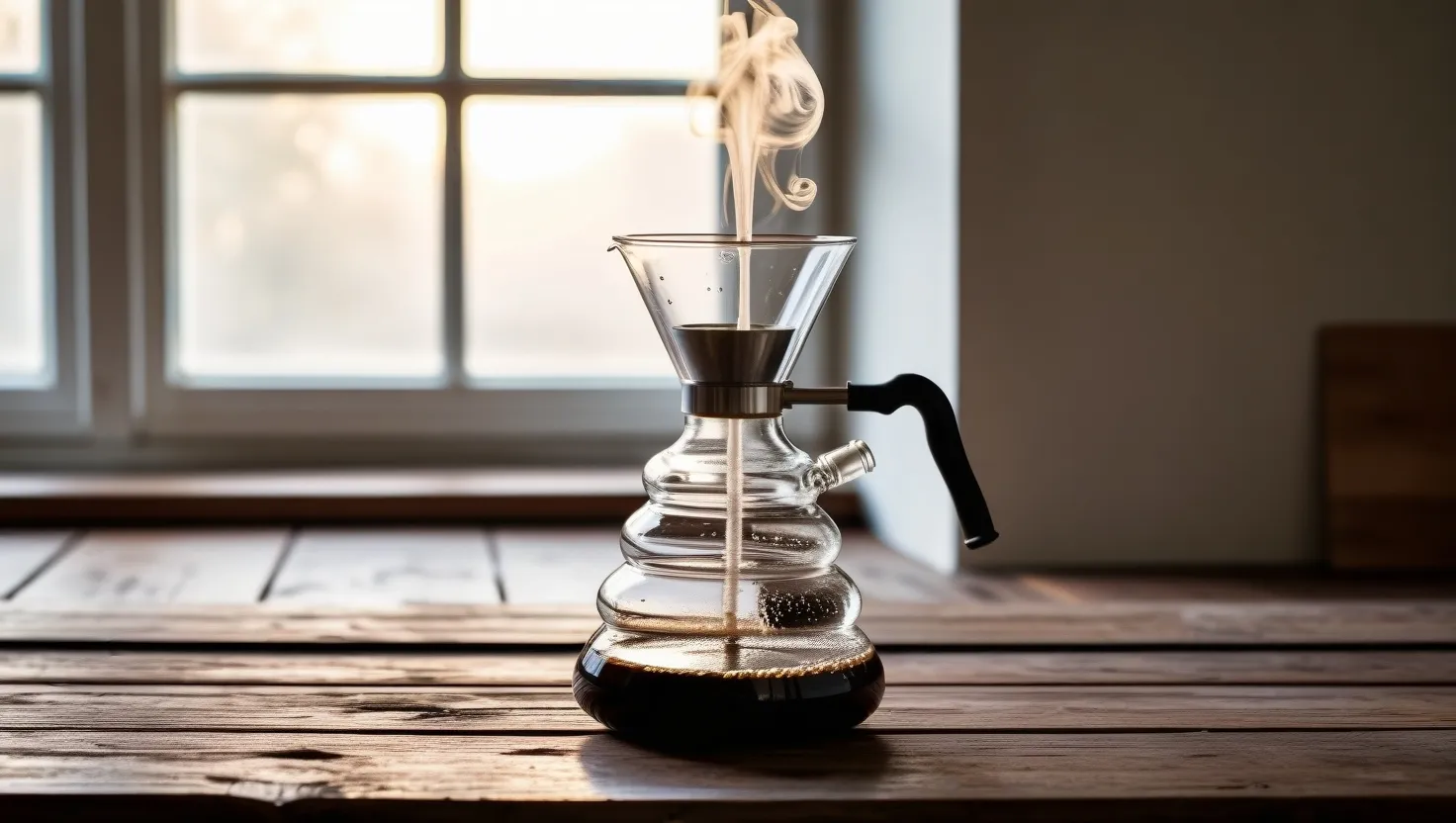As I stand in my kitchen, surrounded by the familiar aroma of coffee, I often find myself fascinated by the intricate dance of science and art that unfolds when I use my siphon coffee brewer. This ancient yet elegant method of brewing coffee is more than just a way to make a cup of coffee; it’s a demonstration of fundamental scientific principles in action.
The siphon coffee brewer, with its bulb-like vessels and Bunsen burner, looks like something out of a mad scientist’s lab. But beneath its visually impressive exterior lies a complex interplay of thermodynamics, chemistry, and physics. Let’s delve into the heart of this process and explore how these scientific principles come together to create a unique coffee experience.
The Science of Expansion and Contraction
At the core of the siphon brewing method is the principle of expansion and contraction. When you heat the water in the lower vessel, it begins to boil and turn into vapor. This vapor increases the pressure inside the vessel, pushing the water upward through a small tube into the upper vessel. Here, the coffee grounds await, ready to be infused with the hot water.
The key to this process is the difference in pressure between the two vessels. As the water heats up, the vapor pressure in the lower vessel exceeds the atmospheric pressure in the upper vessel, forcing the water to rise. This is a perfect example of the Ideal Gas Law in action: PV = nRT, where pressure (P), volume (V), number of moles (n), gas constant (R), and temperature (T) are all intricately linked.
The Role of Temperature and Pressure
Temperature plays a crucial role in this process. As the water in the lower vessel heats up, the molecules gain kinetic energy and start moving more rapidly. This increased movement results in higher pressure, which is what drives the water into the upper vessel. Once the water reaches the upper vessel, it mixes with the coffee grounds, allowing for a full immersion extraction.
The heat source, whether it’s a Bunsen burner or an infrared heating lamp, must be carefully managed. The goal is to keep the water at a consistent temperature, usually around 200°F, to ensure optimal extraction without burning the coffee. This delicate balance of temperature and pressure is what makes siphon brewing so unique and flavorful.
The Vacuum Effect
As the brewing process reaches its climax, the heat source is removed, and the temperature in the lower vessel begins to drop. This cooling causes the vapor to condense back into water, reducing the pressure inside the vessel. Now, the pressure in the upper vessel exceeds that in the lower vessel, and gravity takes over. The brewed coffee is pulled back down through the filter and into the lower vessel, leaving the coffee grounds behind.
This vacuum effect is not just a simple reversal of pressure; it’s a demonstration of the principles of thermodynamics. As the system cools, the volume of the gas (water vapor) decreases, leading to a drop in pressure. This pressure difference is what drives the coffee back into the lower vessel, creating a clean and tea-like cup of coffee.
A Glimpse into History
The siphon coffee brewer has a rich history that dates back to the 1830s in Germany. It was one of the first methods to use vacuum principles to brew coffee, and its design has remained relatively unchanged over the years. Despite its historical roots, the siphon brewer remains a favorite among coffee enthusiasts for its unique flavor profile and visually appealing process.
The Flavor Profile
One of the standout features of siphon coffee is its flavor profile. Unlike pour-over methods, where the coffee blooms quickly and then drips into the cup, siphon brewing allows the coffee to bloom for a longer period. This extended blooming time helps to extract more nuanced flavors from the coffee beans, making each cup a delightful experience.
The full immersion extraction also ensures that all the water is in contact with the coffee grounds at some point, but not all at once. This staggered contact prevents the coffee from becoming bitter and allows the subtle flavors to shine through. Whether you’re using a medium or fine grind, the siphon brewer’s ability to extract flavors without burning the coffee is unparalleled.
Practicality and Aesthetics
While the siphon brewer is not the most practical daily brewer due to the care and effort required, it is certainly a showstopper. The process is almost theatrical, with the water rising and falling in a gravity-defying dance. For those who enjoy making a statement with their coffee, the siphon brewer is a must-have.
The aesthetics of the brewer itself are also noteworthy. The glass vessels and the siphon tube create a beautiful, transparent process that is as much a joy to watch as it is to taste. Whether you’re brewing for yourself or for guests, the siphon coffee maker is sure to impress.
Personal Touches and Tips
As someone who has spent countless hours perfecting the art of siphon brewing, I can attest to the importance of small details. For instance, using the right grind size is crucial. A medium to fine grind ensures that the water flows smoothly through the filter without clogging it or resulting in a weak coffee.
Another tip is to ensure the outside of the lower vessel is dry before applying heat to prevent it from cracking. And, of course, the type of coffee beans you use can greatly affect the flavor. Experimenting with different roasts and origins can lead to some amazing discoveries.
Global Coffee Culture
The siphon coffee brewer may seem like a niche item, but it has a significant impact on global coffee culture. In many parts of the world, especially in Asia and Europe, siphon brewing is a revered method that brings people together. Coffee shops and cafes often feature siphon brewers as a centerpiece, attracting coffee aficionados who appreciate the art and science behind this unique brewing method.
In Japan, for example, siphon coffee is highly regarded for its delicate flavor and the ritualistic process involved in brewing it. This method has also influenced the development of other brewing techniques, as coffee enthusiasts continually seek to innovate and improve their craft.
Conclusion
Siphon coffee brewing is more than just a way to make coffee; it’s an experience that combines science, art, and culture. The intricate dance of temperature, pressure, and gravity creates a cup of coffee that is both flavorful and visually appealing. Whether you’re a coffee enthusiast, a science buff, or simply someone who appreciates the beauty in everyday processes, the siphon coffee brewer is sure to captivate and inspire.
As I pour my freshly brewed siphon coffee into a warmed mug, I am reminded of the magic that happens when science meets culinary art. Each sip is a testament to the power of understanding and appreciating the little details that make life’s simple pleasures so extraordinary. So the next time you brew a cup of coffee, take a moment to appreciate the science behind it – you might just find a new level of enjoyment in your daily cup.






